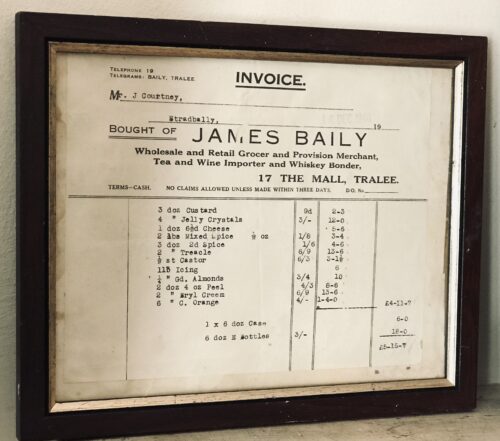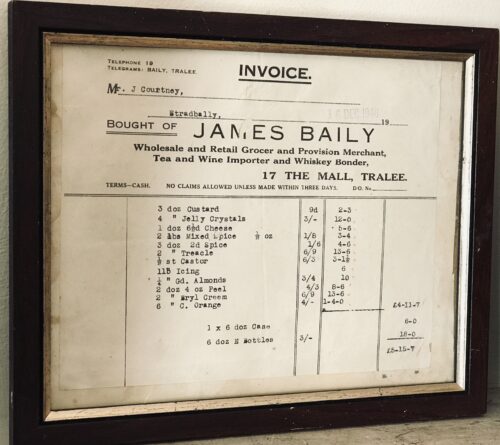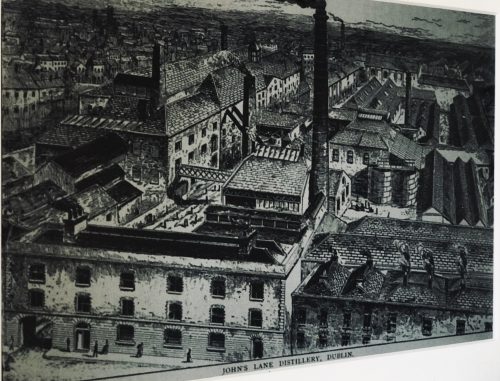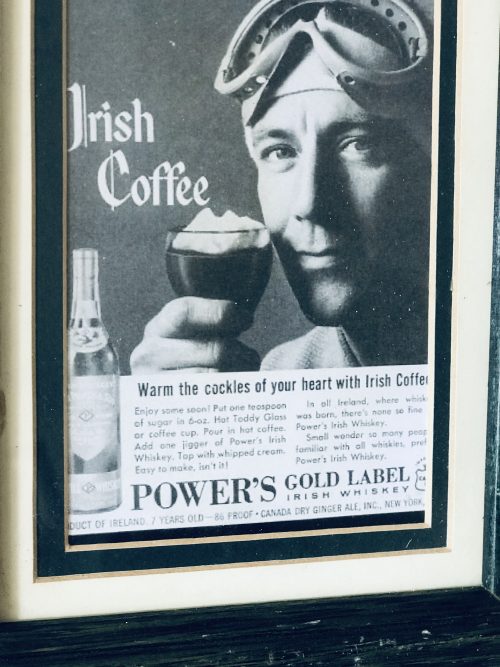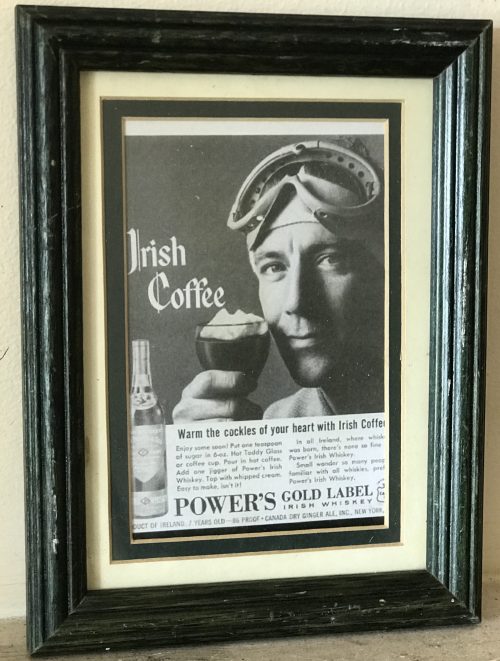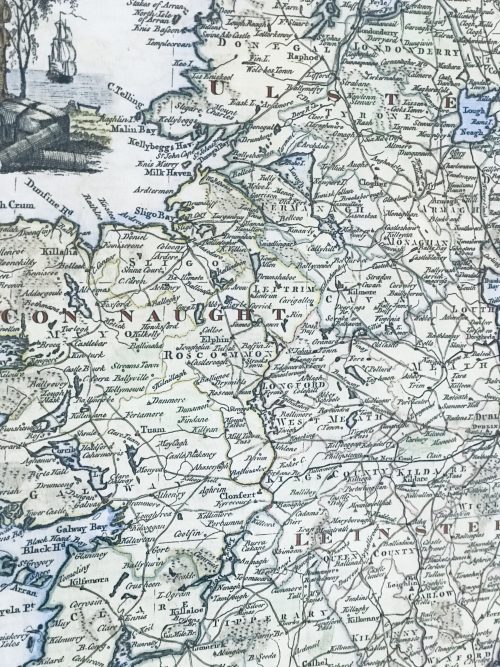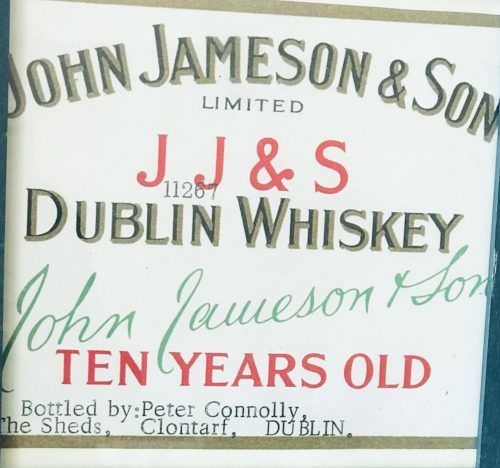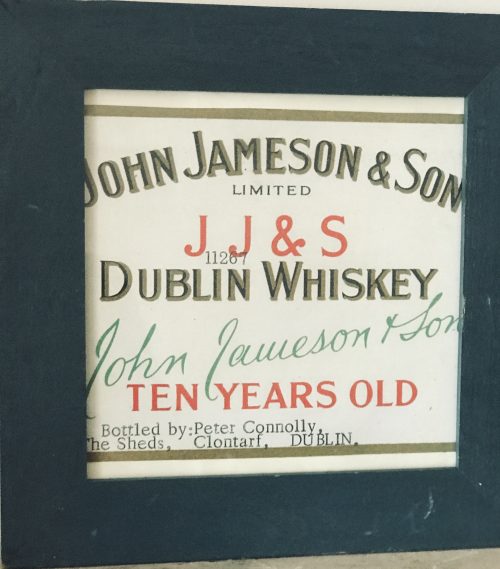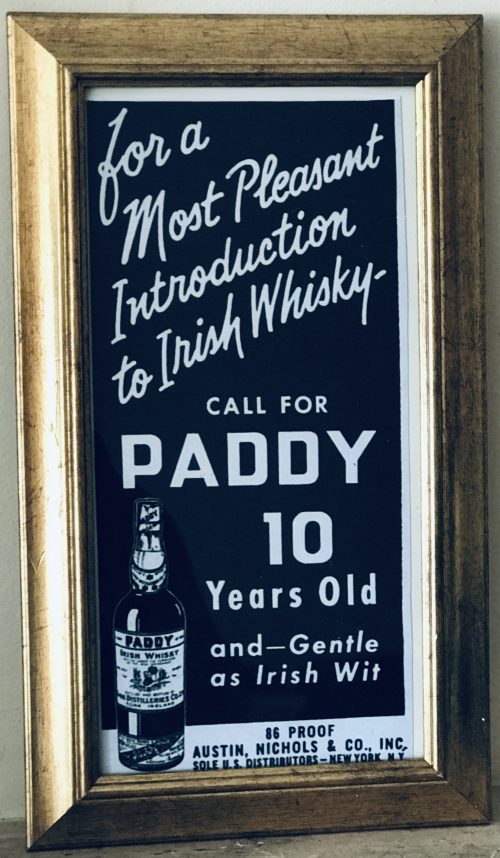27cm x 22cm
Robert Emmet (4 March 1778 – 20 September 1803) was an
Irish Republican, and
Irish nationalist patriot, orator and rebel leader. After leading an abortive
rebellion against British rule in 1803 he was captured then tried and executed for
high treason against the British king
George III of Great Britain and Ireland.
Emmet came from a wealthy Anglo-Irish
Protestant ascendancy Church of Ireland family who sympathized with Irish Catholics and Protestant Dissenters, particularly in Ulster, such as the
Presbyterians and their lack of representation in Parliament. The Emmet family also sympathized with the rebel colonists, or "patriots", in the
American Revolution. While Emmet's efforts to rebel against British rule failed, his actions and speech after his conviction inspired his compatriots.
Early life
Emmet was born at 109
St. Stephen's Green,
in
Dublin on 4 March 1778. He was the youngest son of Dr Robert Emmet (1729–1802), a court physician, and his wife, Elizabeth Mason (1739–1803). The Emmets were financially comfortable, members of the
Protestant Ascendancywith a house at St Stephen's Green and a country residence near
Milltown. One of his elder brothers was an Irish Republican and Nationalist
Thomas Addis Emmet, a close friend of
Theobald Wolfe Tone, who was a frequent visitor to the house when Robert was a child.
Emmet attended Oswald's school, in Dopping's-court, off Golden-lane.
Emmet entered
Trinity College Dublin in October 1793, at the age of fifteen. In December 1797 he joined the College Historical Society, a debating society.
Career as a revolutionary
While Emmet was at college, his brother Thomas and some of his friends became involved in political activism. Robert became secretary of a secret United Irish Committee in college, and was expelled in April 1798 as a result. That same year he fled to France to avoid the many British arrests of nationalists that were taking place in Ireland.
While in France, Emmet supposedly garnered the support of Napoleon, who had promised to lend support when the upcoming revolution started.
However this pledged support existed in Emmet's imagination, as Napoleon was fully involved from early 1798 in organising the
French invasion of Egypt. Napoleon was in
Toulon from 9 May 1798, before the Irish Rebellion of 1798 had begun, yet there is no record of Emmet travelling to Toulon to see him.
After the
1798 rising, Emmet was involved in reorganising the defeated
United Irish Society. In April 1799 a warrant was issued for his arrest. He escaped and soon after travelled to the continent in the hope of securing French military aid, but his efforts were unsuccessful. The
French Consulate dictatorship was however focused on new peace treaties, that resulted in the
Treaty of Lunéville in 1801 and the
Treaty of Amiens (March 1802).
Emmet returned to Ireland in October 1802. In March the following year, he began preparations for another uprising. In the meantime, the French Consulate was holding on to Holland, Switzerland and Piedmont, in a manner contrary to the Treaty of Amiens, and so the treaty was ended by the British government in May 1803.
1803 rebellion

"Robert Emmet – The Irish Patriot"; a posthumous imaginary portrait of 1872.
After his return to Ireland, Emmet began to prepare a new rebellion, with fellow revolutionaries
Thomas Russell and
James Hope. He began to manufacture weapons and explosives at a number of premises in Dublin and developed a folding
pike fitted with a hinge that allowed it to be concealed under a
cloak. Unlike in
1798, the revolutionaries concealed their preparations, but a premature explosion at one of Emmet's arms depots killed a man. Emmet was forced to advance the date of the rising before the authorities' suspicions were aroused.
Emmet was unable to secure the help of
Michael Dwyer's
Wicklow rebels.
Many rebels from
Kildare turned back due to the scarcity of firearms they had been promised, but the rising went ahead in
Dublin on the evening of 23 July 1803. About 10,000 copies were printed of a
proclamation in the name of the "Provisional Government", which influenced the
1916 Proclamation; most were destroyed by the authorities.
Emmet wore a uniform of a green coat with white facings, white breeches, top-boots, and a cocked hat with feathers.
[5] Failing to seize
Dublin Castle, which was lightly defended, the rising of some 200 men amounted to a large-scale disturbance in the Thomas Street area. Emmet saw a
dragoon being pulled from his horse and piked to death, the sight of which prompted him to call off the rising to avoid further bloodshed. But, he had lost all control of his followers. In one incident, the
Lord Chief Justice of Ireland,
Lord Kilwarden, was dragged from his
carriage and stabbed by pikes. Found still alive, he was taken to a watch-house where he died shortly thereafter. He had been reviled as chief prosecutor of
William Orr in 1797, but he was also the judge who granted
habeas corpus to
Wolfe Tone in 1798. Kilwarden's nephew, the Rev. Mr. Wolfe, was also murdered. Sporadic clashes continued into the night until finally quelled by British military forces.
Capture and trial

Robert Emmet's cell in Kilmainham Gaol
Emmet fled into hiding, moving from Rathfarnham to
Harold's Cross so that he could be near his sweetheart,
Sarah Curran. He likely could have escaped to France, had he not insisted upon returning with Anne Devlin in order to take leave of Sarah Curran, to whom he was engaged. She was daughter of
John Philpot Curran.
Emmet was captured on 25 August and taken to the Castle, then removed to Kilmainham. Vigorous but ineffectual efforts were made to procure his escape.

Depiction of Robert Emmet's trial
He was tried for
treason on 19 September; the Crown repaired the weaknesses in its case by secretly buying the assistance of Emmet's defense attorney,
Leonard McNally, for £200 and a pension.
But McNally's assistant Peter Burrowes could not be bought and he pleaded the case as best he could.
On 19 September, Emmet was found guilty of
high treason.
Before sentencing Emmet delivered a speech, the
Speech from the Dock. It is especially remembered for its closing sentences and secured his posthumous fame among executed
Irish republicans. It was printed in 1835 in
Manchester for the bookseller TP Carlile.
Let no man write my epitaph; for as no man who knows my motives dare now vindicate them, let not prejudice or ignorance, asperse them. Let them and me rest in obscurity and peace, and my tomb remain un-inscribed, and my memory in oblivion, until other times and other men can do justice to my character. When my country takes her place among the nations of the earth, then and not till then, let my epitaph be written. I have done.
An earlier and more credible version of the speech was published in 1818, taken from the notes of his counsel Peter Burrowes, in a biography on Sarah Curran's father
John, emphasising that Emmet's epitaph should be written on the future vindication of his character, and not specifically when Ireland took its place as a nation. It closed:
I am here ready to die. I am not allowed to vindicate my character; no man shall dare to vindicate my character; and when I am prevented from vindicating myself, let no man dare to calumniate me. Let my character and my motives repose in obscurity and peace, till other times and other men can do them justice. Then shall my character be vindicated; then may my epitaph be written.
The modern historian Patrick Geoghehan wrote in 2003: "At last count there are over seventy different versions of the text, but most of these are later reworkings and have little claim to acceptance."

Depiction of Robert Emmet's execution

Memorial at Emmet's execution site, Thomas Street
Chief Justice
Lord Norbury sentenced Emmet to be
hanged, drawn and quartered, as was customary for conviction of treason. The following day, 20 September, Emmet was executed in Thomas Street in front of
St. Catherine's. He was hanged and then beheaded once dead.
As family members and friends of Robert had also been arrested, including some who had nothing to do with the rebellion, no one came forward to claim his remains out of fear of arrest.
Robert Emmet is described as slight in person; his features were regular, his forehead high, his eyes bright and full of expression, his nose sharp, thin, and straight, the lower part of his face slightly pock-marked, his complexion sallow.
[5]
Burial
Emmet's remains were first delivered to Newgate Prison and then back to Kilmainham Gaol, where the jailer was under instructions that if no one claimed them they were to be buried in a nearby hospital's burial grounds called 'Bully's Acre' in Kilmainham. A later search there found no remains.
It is claimed that Emmet's remains were secretly removed from Bully's Acre and reinterred in St Michan's, a Dublin church with strong United Irish associations, though it was never confirmed.
Speculation has continued regarding the whereabouts of Emmet's remains. It was suspected that they were buried secretly in the vault of a Dublin
Anglican church. When the vault was inspected in the 1950s a headless corpse was found, suspected of being Emmet's, but could not be identified. Widely accepted is the theory that Emmet's remains were transferred to
St Peter's Church in Aungier St. under cover of the burial of Robert's sister,
Mary Anne Holmes, in 1804.
In the 1980s the church was de-consecrated and all the coffins were removed from the vaults. The church has since been demolished.
Legacy

Robert Emmet was honoured on two
Irish postage stamps issued in 1953, commemorating the 150th anniversary of his death
Emmet became a heroic figure in Irish history. His speech from the dock is widely quoted and remembered, especially among Irish nationalists. As he and his family also supported the American Revolutionary War, he is remembered there as well.
Emmet's housekeeper,
Anne Devlin, is also remembered in Irish history for enduring
torture without providing information to the authorities.
Robert Emmet's older brother,
Thomas Addis Emmet emigrated to the United States shortly after Robert's execution. He eventually served as the
New York State Attorney General. His descendants include the prominent American portrait painters
Lydia Field Emmet,
Rosina Emmet Sherwood,
Ellen Emmet Rand, and
Jane Emmet de Glehn, who were Robert Emmet's great-grand-nieces. Another descendant is American playwright
Robert Emmet Sherwood.
Golf course architect
Devereux Emmet, electrical engineer
William Le Roy Emmet, United States Army colonel
Robert Temple Emmet, and attorney and sportsman
C. Temple Emmet were among his great-grand-nephews.
Representation in popular culture
Robert Emmet wrote a letter from his cell in
Kilmainham Gaol, Dublin on 8 September 1803. He addressed it to "Miss Sarah Curran, the
Priory,
Rathfarnham" and handed it to a prison warden, George Dunn, whom he trusted to deliver it. Dunn betrayed him and gave the letter to the government authorities. Due to Emmet's attempt to hide near Curran, which cost him his life, and
his parting letter to her, Emmet became known as a legendary romantic character, appealing to the
Victorian Era's appetite for
Romanticism.
His story was the subject of stage melodramas during the 19th century, most notably
Dion Boucicault's inaccurate 1884 play
Robert Emmet. He mistakenly portrayed Emmet and Curran as Roman Catholics (they were both Protestants), her father
John Philpot Curran being portrayed as a
Unionist, and Emmet being killed onstage by
firing squad.
Robert's friend from Trinity College,
Thomas Moore, championed his cause by writing popular ballads about him and Sarah Curran, such as
- Oh breathe not his name! let it sleep in the shade,
- Where cold and unhonoured his relics are laid!
The poem "On Robert Emmet's Grave" by
Percy Bysshe Shelley states that Emmet's grave will "remain unpolluted by fame", as its location is unknown:
- No trump tells thy virtues—the grave where they rest
- With thy dust shall remain unpolluted by fame,
- Till thy foes, by the world and by fortune caressed,
- Shall pass like a mist from the light of thy name.
Washington Irving devoted "The Broken Heart" in his
The Sketch Book of Geoffrey Crayon, Gent. to the romance between Emmet and Sarah Curran, citing it as an example of how a broken heart can be fatal.
The American film by Irish-Canadian
Sidney Olcott entitled
All for Old Ireland (1915), is also known as
Bold Emmett, Ireland's Martyr or
Robert Emmet, Ireland's Martyr.
He is referenced by the name "bold Robert" in the song
Back Home in Derry, written by
Bobby Sands and recorded by
Christy Moore.
Honours
Places named after Emmet in the United States include
Emmetsburg, Iowa;
Emmet, Nebraska;
Emmet County, Iowa; Emmett, Michigan and
Emmet County, Michigan.
[20] The Robert Emmet Elementary School in
Chicago, Illinois was named for him. Two time All Ireland Club Camogie Champions
Robert Emmet's GAC Slaughtneil is named after him. Emmet Park in Savannah, Georgia was named after Emmet after urging from the large Irish born population in the city.
Statues were erected in his honour:
- A life size bronze statue of Robert Emmet by Jerome Connor stands in St Stephen's Green, Dublin, the parkland beside which Emmet was born.
- A bronze statue of Emmet by Jerome Connor stands in Washington, DC on Embassy Row (Massachusetts Avenue NW and S Street NW). A public commemoration of Emmet's execution and legacy is held annually on the fourth Sunday in September by the Irish American Unity Conference.
- A copy of this statue was installed on the Music Concourse in front of the California Academy of Sciences in San Francisco's Golden Gate Park.
- A statue of Robert Emmet is in the courthouse square in Emmetsburg, Iowa.
Lord Edward Fitzgerald:
The United Irish movement in Kildare is generally associated with Lord Edward Fitzgerald. Lord Edward was born in 1763, one of 19 children to James Fitzgerald, 1st Duke of Leinster and his wife Emily Lennox, a daughter of the Duke of Richmond. He was member of parliament for Co. Kildare but later resigned his seat in the Irish parliament after an extraordinary outburst against the government. He visited France, adopted revolutionary ideas and renounced his title. While in France he married a French girl, Pamela, the alleged illegitimate daughter of the Duke of Orleans. They returned to Ireland but disliked the conservative atmosphere in Dublin. Eventually they moved to Kildare Town where they lived happily for almost two years.
By 1796 Lord Edward had actively joined the United Irishmen and his home at Kildare Lodge became a meeting place for other members.
He had served in the Sussex militia but transferred to two different regiments, desperate to see active service in America. He was wounded at the Battle of Eutaw Springs in 1781. A member of the most distinguished family in Ireland and a competent soldier, he was well suited to his position as military commander of the United Irish Forces. His political beliefs were influenced by French revolutionary ideas. Lord Edward supported the doctrines of enlightened thinkers such as Paine and Rousseau. He believed in Liberty, Equality, Fraternity and The Rights of Man.
Following the arrests of the Leinster Directory Lord Edward went into hiding. The government offered £1000 reward for his arrest and on the 19th of May Lord Edward was arrested at a house in Thomas Street Dublin. During the struggle he was wounded and one of his captors died shortly after. Lord Edward was lodged in Newgate jail where he died on June 4th 1798. One of the few United Irish Leaders with military experience, his capture just before the outbreak of the rebellion was a major blow to the organisation.
Theobald Wolfe Tone, posthumously known as
Wolfe Tone (20 June 1763 – 19 November 1798), was a leading Irish revolutionary figure and one of the founding members of the
United Irishmen, a republican society that revolted against
British rule in Ireland, where he was a leader going into the
1798 Irish Rebellion. He was captured at
Lough Swilly, near
Buncrana,
County Donegal on 3 November 1798,
and was sentenced to death on 12 November by hanging.
He died seven days later in unclear circumstances. It has since been theorised and agreed upon by most Irish scholars that he committed suicide while in prison.
Early life
Wolfe Tone was born on 20 June 1763. His family were descended from a
French Protestant family who fled to England from
Gascony in the 16th century to escape religious persecution. A branch of the family settled in Dublin in the 17th century. Theobald's father, Peter Tone, was a coach-maker who had a farm near
Sallins,
County Kildare and belonged to the
Church of Ireland. His mother came from a Catholic merchant family who converted to Protestantism after Theobald was born.
His maternal grandfather was captain of a vessel in the
West India trade.
He was baptised as Theobald Wolfe Tone in honour of his
godfather, Theobald Wolfe of Blackhall,
County Kildare, a first cousin of
Arthur Wolfe, 1st Viscount Kilwarden. However, it was widely believed that Tone was the son of Theobald Wolfe, which, if true, made him a half-brother of the poet
Charles Wolfe. After his death, he was widely referred to as Wolfe Tone.
In 1783, Tone found work as a tutor to Anthony and Robert, younger half-brothers of
Richard Martin MP of
Galway, a prominent supporter of
Catholic emancipation, at Dangan, the Martin family home.
Tone fell in love with Martin's wife, but later wrote that it came to nothing.
During this period he briefly considered a career in the theatre as an actor.
He studied law at
Trinity College Dublin, where he became an active member in the
College Historical Society debating club and was elected its auditor in 1785. He graduated BA in February 1786.
He qualified as a barrister in
King's Inns at the age of 26 after keeping the requisite terms as a student member of the
Middle Temple in London.
As a student, he eloped with
Martha Witherington, daughter of William and Catherine Witherington (née Fanning) of Dublin.
She would go on to change her name to Matilda, at Tone's request. When they married, Tone was 22, and Matilda was about 16.
In 1796, while he was in France and she in Hamburg he wrote in his journal: "She is the delight of my eyes, the joy of my heart, the only object for which I wish to live. I doat upon her to distraction."
Disappointed at finding no support for a plan that he had submitted to
William Pitt the Younger, to found a military colony in Hawaii, Tone initially planned to enlist as a soldier in the
East India Company, but applied too late in the year, when no more ships would be sent out until the following spring.
Politician

One of the inscribed flagstones on the steps leading to the grave of Theobald Wolfe Tone
In September 1791, Tone published
An Argument on behalf of the Catholics of Ireland, signed "A Northern
Whig".
It displayed the growing breach between
Whig patriots like
Henry Flood and
Henry Grattan, who sought
Catholic emancipation and parliamentary reform without severing the tie to England. Tone expressed contempt for the constitution Grattan obtained from the British government in 1782. Himself an
Anglican, Tone urged co-operation between the religions in Ireland as the only means of obtaining redress of Irish grievances. The British government had just passed the
Roman Catholic Relief Act 1791, but the Dublin parliament was in no hurry to do so.
In October 1791 Tone converted these ideas into practical policy by founding, in conjunction with
Thomas Russell (1767–1803),
Napper Tandy and others, the
Society of the United Irishmen. Until 1794, this society aimed at no more than the formation of a political union between
Catholics and
Protestants, with a view to obtaining a liberal measure of parliamentary reform.
In 1792 he was appointed an assistant secretary of the
Catholic Committee.
The Catholics involved were not united regarding the steps they were to take, and in December 1791, sixty-eight members withdrew, led by
Lord Kenmare, with the support of the higher clergy. When the British government questioned the legality of the Catholic Convention called in December 1792, Tone drew up for the committee a statement of the case on which a favourable opinion of counsel was obtained. A petition was made to King
George III early in 1793, and that year the re-enfranchisement of Catholics was enacted – if they owned property as "
forty-shilling freeholders". They could again be called as barristers and serve as army officers. They could not, however, enter parliament or be made state officials above grand jurors. The Convention voted to Tone a sum of £1,500 with a gold medal and voted to dissolve.
In this new climate of goodwill the
Maynooth College Act 1795 was passed.
Sectarian animosity threatened to undermine the United Irishmen movement: two secret societies in
Ulster fought against each other: the agrarian Protestant
Peep o' Day Boys and their Catholic opponents the
Defenders. Tone's aim was to unite both into a revolutionary army of Irish "men of no property". Tone himself admitted that with him hatred of England had always been "rather an instinct than a principle," though until his views should become more generally accepted in Ireland he was prepared to work for reform as distinguished from revolution. But he desired to root out the popular respect for the names of Charlemont and Grattan, and to transfer to more violent leaders the conduct of the national movement. Wolfe Tone's principles were drawn from the
French Convention, and he was a disciple of
Georges Danton and
Thomas Paine.
Revolutionary in exile
In 1794 the Society of United Irishmen became a sworn association, using oaths that aimed at the overthrow of the
Kingdom of Ireland. Given that France and Britain had
been at war since early 1793, administering or making such oaths turned a reformist republican society that had wanted to extend the franchise within the existing system into a republican revolutionary one.
Affiliating more closely with the new
French Republic also associated Tone with its evolving policy of
"Dechristianization", which was strongly opposed by the
Catholic Church in Ireland. Although he was seen as a Catholic champion in the early 1790s, most of his wealthier Catholic supporters fell away in 1794.
Also in 1794, the United Irishmen, persuaded that no party in the Dublin parliament (where being an MP was limited to Anglicans) seemed likely to accept their scheme of
universal manhood suffrage and equal electoral districts, began to recast their hopes on a French invasion. An Irish clergyman living in England, the
Reverend William Jackson, who had taken in revolutionary opinions during his long stay in France, came to Ireland to ascertain to what extent the Irish people were ready to support a French invasion.
Tone drew up a memorandum for Jackson on the state of Ireland, which he described as ripe for revolution. An attorney named Cockayne, to whom Jackson had imprudently disclosed his mission, betrayed the memorandum to the government.In April 1794 Jackson was arrested on a charge of treason and dramatically committed suicide during his trial.
Several of the leading United Irishmen, including
Archibald Hamilton Rowan, fled the country; the papers of the United Irishmen were seized by the Dublin administration, and for a time the organisation was broken up. Tone, who had not attended meetings of the society since May 1793, remained in Ireland until after the trial of Jackson and was advised to leave Ireland in April 1795. Having friends among the government party, including members of the Beresford family, he succeeded in making terms with the government and emigrated to the United States, where he arrived in May 1795.Before leaving, he and his family travelled to
Belfast, and it was at the summit of
Cavehill that Tone made the Cavehill Compact with fellow Irish radicals, including Russell and
McCracken, promising "never to desist in our efforts until we had subverted the authority of England over our country, and asserted our independence."
The United Irishmen reformed in 1796. The Society began seriously to look to France to support a rising with troops.
Living in
Philadelphia, Tone wrote a few months later to Thomas Russell expressing unqualified dislike of the American people, whom he imagined to be no more truly democratic in sentiment and no less attached to authority than the British; he described
George Washington as a "high-flying aristocrat", and he found the aristocracy of money and achievement in America still less to his liking than the European aristocracy of birth.Tone also lived briefly in
West Chester and in
Downingtown, Pennsylvania.
Finding himself at Philadelphia in the company of Reynolds, Rowan, and Tandy, Tone went to Paris to persuade the French government to send an expedition to invade Ireland. In February 1796 he arrived in Paris and had interviews with De La Croix and
Carnot, who were impressed by his energy, sincerity, and ability. A commission was given him as adjutant-general in the French army, which he hoped might protect him from the penalty of treason in the event of capture by the British; though he himself claimed the authorship of a proclamation said to have been issued by the United Irishmen, enjoining that all Irishmen taken with arms in their hands in the British service should be instantly shot; and he supported a project for landing
La Legion Noire in England, who were to burn
Bristol.
A sympathizer wrote of him, in French, saying:
Wolf Tone was sent to France to claim the support of the Directory, under the express condition that the French should come to Ireland as allies, and should act under direction of the new government, as Rochambeau had done in America. With this view, Tone had frequently conferences at Paris with Hoche; and the Directory finally determined to send from Brest a fleet of forty-five sail, with an army of fifteen thousand men, under the charge of this able general, December 15, 1796. England was saved by a violent tempest.
Hoche's Expedition and the 1798 Rebellion

In
End of the Irish Invasion ; — or – the Destruction of the French Armada(1797),
James Gillray caricatured the failure of Hoche's expedition.
The
French Directory planned a military landing in Ireland in support of the coming revolution foretold by Tone.
The Directory possessed information from
Lord Edward FitzGerald and Arthur O'Connor confirming Tone, and prepared to despatch an expedition under
Louis Lazare Hoche. On 15 December 1796, the expedition, consisting of forty-three sail and carrying about 14,450 men with a large supply of war material for distribution in Ireland, sailed from
Brest.
Tone accompanied it as "Adjutant-general Smith" and had the greatest contempt for the seamanship of the French sailors, who were unable to land due to severe gales.They waited for days off
Bantry Bay, waiting for the winds to ease, but eventually returned to France.
Tone served for some months in the French army under Hoche, who had become the French Republic's minister of war after his victory against the Austrians at the
Battle of Neuwied on the Rhine in April 1797. In June 1797 Tone took part in preparations for a military expedition to Ireland from the
Batavian Republic, a
puppet state created during the
Batavian Revolution in the
Low Countries in January 1795. However, the Batavian fleet under Dutch Vice-Admiral
Jan de Winter was delayed in the harbour of
Texel island that summer by unfavourable easterly winds and from mid-August by a British North-Sea fleet blockade. It eventually put to sea in the first week of October only to be immediately crushed by Admiral
Adam Duncan in the
Battle of Camperdown on October 11, 1797. Tone then returned to Paris. General Hoche, once tasked with an Irish expeditionary force, died of tuberculosis on 19 September 1797 at
Wetzlar after returning to his command on France's
Rhine frontier.
In Ireland the membership of the United Irish had reached 300,000, about 6% of the population,
but a vicious counter-insurgency campaign in 1797 weakened the organisation and forced the leadership to launch a rising without French aid. More importantly, in a largely devoutly Catholic country, the Roman Catholic hierarchy was completely opposed to the United Irish, as they were allied to the French who had just invaded Rome and set up the anti-clerical
"Roman Republic" in early 1798.
Napoleon Bonaparte, with whom Tone had several interviews at this time, was less disposed than Hoche had been to undertake in earnest an Irish expedition; and when
the Rising broke out in Ireland in 1798 he had started for Egypt. When Tone urged the Directory to send effective assistance to the Irish rebels, all that could be promised was a number of raids to descend simultaneously around the Irish coast. One of these under
General Humbert succeeded in landing a force near
Killala,
County Mayo, and gained some success in
Connacht (particularly at
Castlebar) before it was subdued by
General Lake and
Charles Cornwallis. Wolfe Tone's brother Matthew was captured, tried by
court-martial, and hanged; a second raid, accompanied by






















